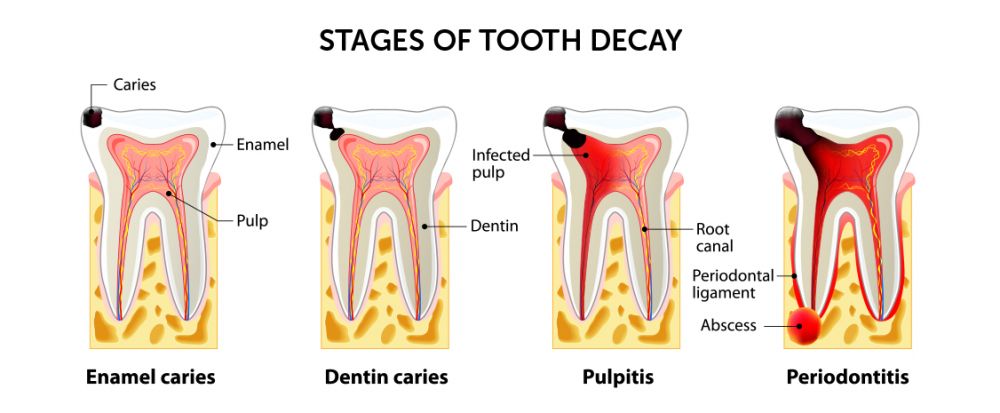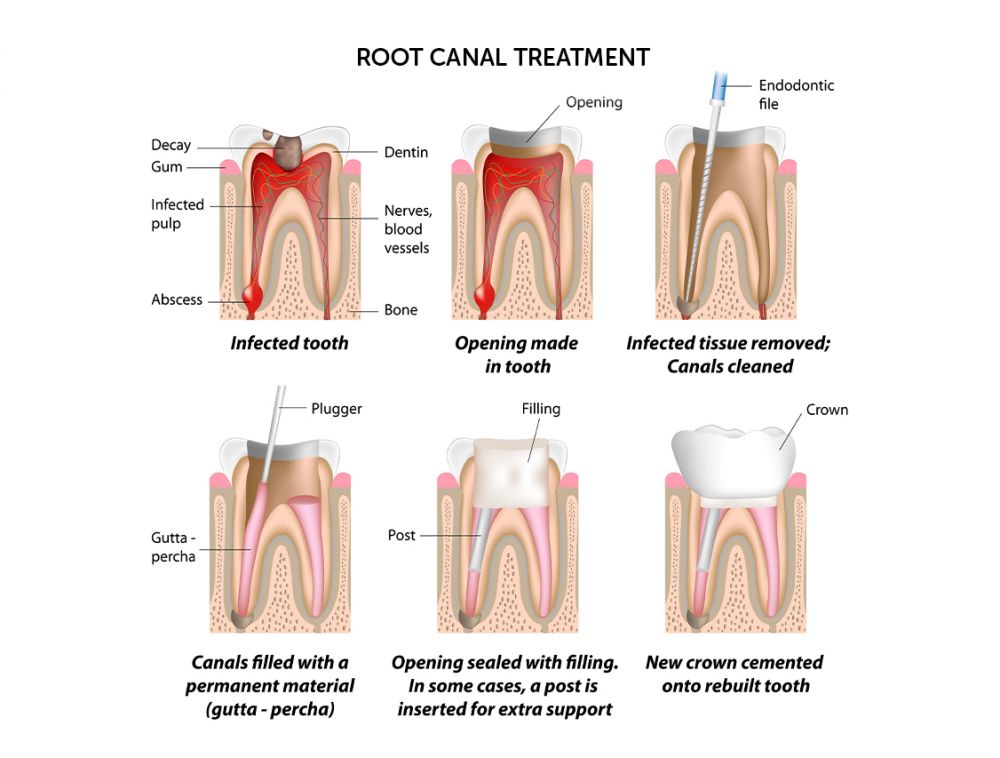ROOT CANAL TREATMENT
Understanding Root Canal Treatment
INTRODUCTION
A damaged or infected tooth can be a painful and uncomfortable experience. Root Canal Treatment, also known as Endodontic therapy, is a procedure used to save a damaged or infected tooth from extraction. This treatment is necessary when the pulp, the soft tissue in the center of the tooth, becomes inflamed or infected. If left untreated, it can lead to severe pain and can spread the infection to other parts of the mouth. In this article, we will explore the ins and outs of Root Canal Treatment, including the process, benefits, and risks involved.

WHAT IS ROOT CANAL TREATMENT?
Root Canal Treatment is a procedure that removes the infected or damaged pulp from the inside of a tooth. The process involves making an opening in the top of the tooth to access the pulp, removing it, cleaning the inside of the tooth, and filling it with a special material to prevent further infection. The tooth is then sealed and restored to its original shape and function.
THE BENEFITS OF ROOT CANAL TREATMENT
There are several benefits to Root Canal Treatment, including:
- Saves the tooth: By removing the infected or damaged pulp and filling the inside of the tooth, Root Canal Treatment saves the tooth from extraction. This means you can keep your natural tooth and maintain the proper bite and chewing function.
- Prevents further infection: Root Canal Treatment removes the source of the infection, which prevents it from spreading to other parts of the mouth.
- Relieves pain: Inflammation and infection of the pulp can cause severe pain. Root Canal Treatment removes the source of the pain, providing relief.
- Maintains tooth structure: By removing only the infected or damaged pulp and not the entire tooth, Root Canal Treatment helps maintain the natural structure and appearance of the tooth.
WHEN IS ROOT CANAL TREATMENT NEEDED?
Root Canal Treatment is needed when the pulp, the soft tissue in the center of the tooth, becomes inflamed or infected. This can occur due to a variety of factors, including:
- Decay: Decay that reaches the pulp of the tooth can cause inflammation and infection.
- Trauma: A traumatic injury to the tooth can cause damage to the pulp, leading to inflammation and infection.
- Cracks or chips: Cracks or chips in the tooth can allow bacteria to enter the pulp, leading to inflammation and infection.
If left untreated, the infection can spread and cause severe pain and other complications.
THE PROCESS OF ROOT CANAL TREATMENT
The process of Root Canal Treatment can typically be completed in one to three visits to the dentist. The steps involved include:
- Anesthesia: The dentist will numb the area around the tooth to minimize discomfort during the procedure.
- Accessing the pulp: The dentist will make an opening in the top of the tooth to access the pulp.
- Removing the pulp: The dentist will use special tools to remove the infected or damaged pulp.
- Cleaning and shaping the canal: The inside of the tooth is cleaned and shaped to prepare it for filling.
- Filling and sealing the canal: The dentist will fill the inside of the tooth with a special material to prevent further infection. The tooth is then sealed.
- Restoration: In some cases, the dentist may place a crown or other type of restoration over the tooth to protect it and restore its shape and function.

Frequently Asked Questions (FAQs)
What is Rooting Canal Treatment?
Rooting Canal Treatment is a dental procedure that removes the infected or damaged pulp from the inside of a tooth to save it from extraction. The process involves making an opening in the tooth, removing the pulp, cleaning the inside of the tooth, and filling it with a special material to prevent further infection. The tooth is then sealed and restored to its original shape and function.
What are the benefits of Rooting Canal Treatment?
The benefits of Rooting Canal Treatment include saving the tooth, preventing further infection, relieving pain, and maintaining the natural structure and appearance of the tooth.
When is Rooting Canal Treatment needed?
Rooting Canal Treatment is needed when the pulp of a tooth becomes inflamed or infected, which can occur due to decay, trauma, cracks or chips, or other factors.
How is Rooting Canal Treatment performed?
The process of Rooting Canal Treatment involves anaesthesia, accessing the pulp, removing the pulp, cleaning and shaping the canal, filling and sealing the canal, and restoration. The procedure can typically be completed in one to three visits to the dentist.
What is an Apex Locater used for in Rooting Canal Treatment?
An Apex Locater is a tool used in Rooting Canal Treatment to locate the end of the root canal. It helps the dentist determine the length of the root canal and the location of the apex, or tip, of the tooth. An Apex Locater is used in root canal treatment to accurately locate the apical foramen, or the end of the root canal, for proper instrumentation and obturation. The purpose of using an Apex Locater in root canal treatment is to improve the accuracy and success of the procedure by determining the exact location of the apical foramen.
Apex Locater works by sending electrical signals through the tooth and measuring the time it takes for the signals to reach the apical foramen. This information is then used to determine the location of the apical foramen.
While an Apex Locater is not a requirement for root canal treatment, it can significantly improve the accuracy and success of the procedure. Alternative methods to locate the apical foramen in root canal treatment include radiographs and tactile sensation. However, the use of an Apex Locater is considered to be the most accurate and reliable method.
Is the Root Canal Treatment painful?
No, the Root Canal Treatment is not painful. The procedure is performed under local anesthesia to numb the affected area, and most patients report only minimal discomfort.
How long does the Root Canal Treatment take?
The Root Canal Treatment usually takes two or more appointments to complete, with each appointment lasting anywhere from 30 minutes to an hour.
How much does the Root Canal Treatment cost?
The cost of the Root Canal Treatment varies depending on the severity of the case, the type of tooth involved, and your location. Your dentist can provide a more accurate estimate.
Will I need a crown after the Root Canal Treatment?
In most cases, a crown is recommended after the Root Canal Treatment to protect the tooth and restore its function and appearance.






